With the rains have come a bumper bloom and a pronounced artificial grape aroma all around my back porch…
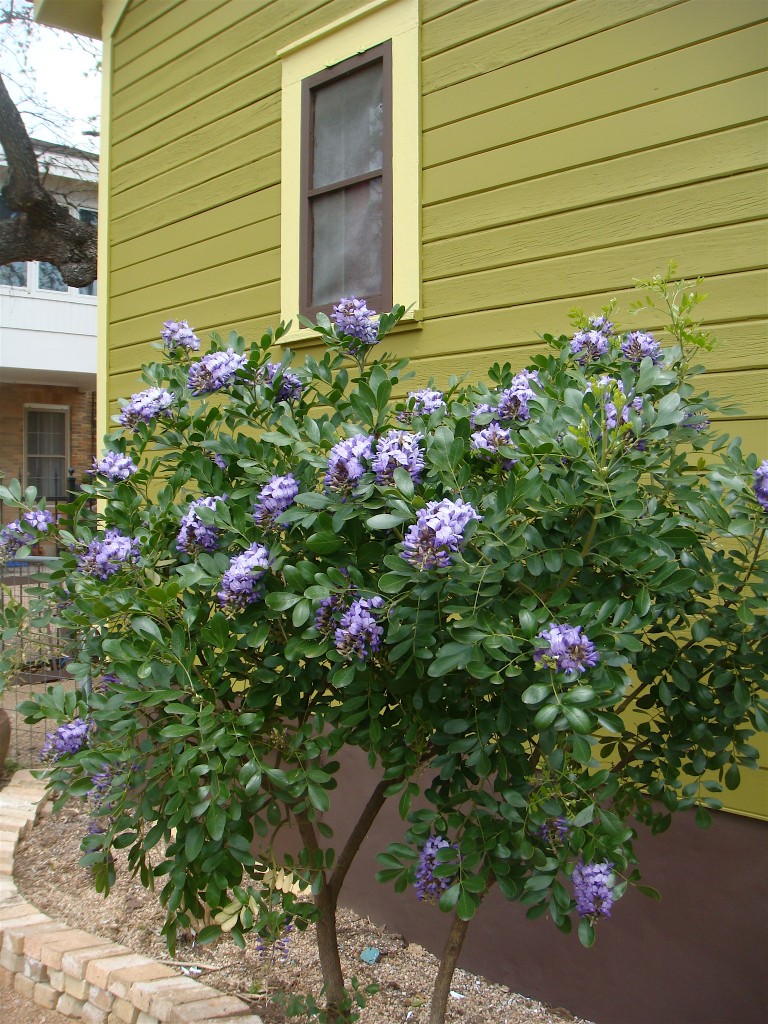
…this week is the week of the Mountain Laurel in Central Texas.
Sophora secundiflora
I keep this one pruned up as high as I can, I think they look better when the trunk is partially exposed.
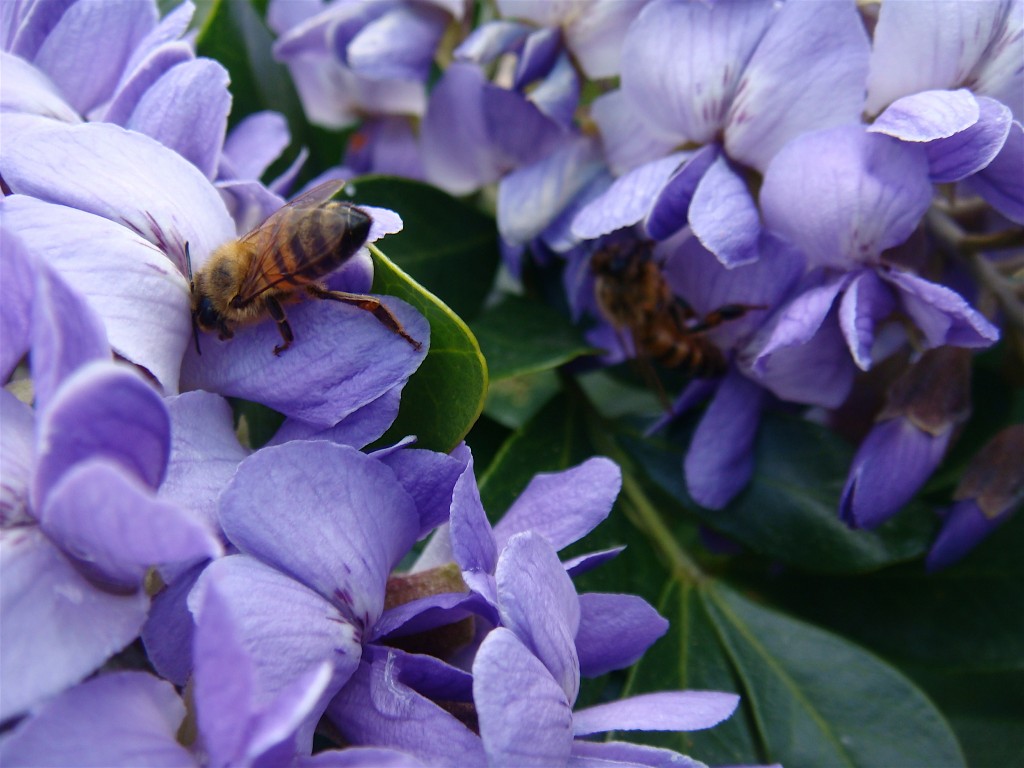
The bees have been swarming the short-lived blooms on the tree.
Talking of small trees / shrubs…
…All the loquats
Eriobotrya japonica
around the Patch have also responded to the rains and sun, sending out an explosion of new growth. The name loquat derives from lou gwat, the Cantonese pronunciation of its old classical Chinese name. In modern Chinese, it is more commonly known as pipa from the resemblance of its shape to that of the Chinese musical instrument pipa.

This is the first year that these shrub / small trees have reached a height that has really started to change the perimeter aesthetic of the Patch. Surprisingly they were not effected by the cold snap, it seems they do not mind dry cold but have a deep hatred of wet freezes like we have had in previous years. Even when they do get nipped, with a quick cutting of the frozen parts, they bounce back extremely fast.
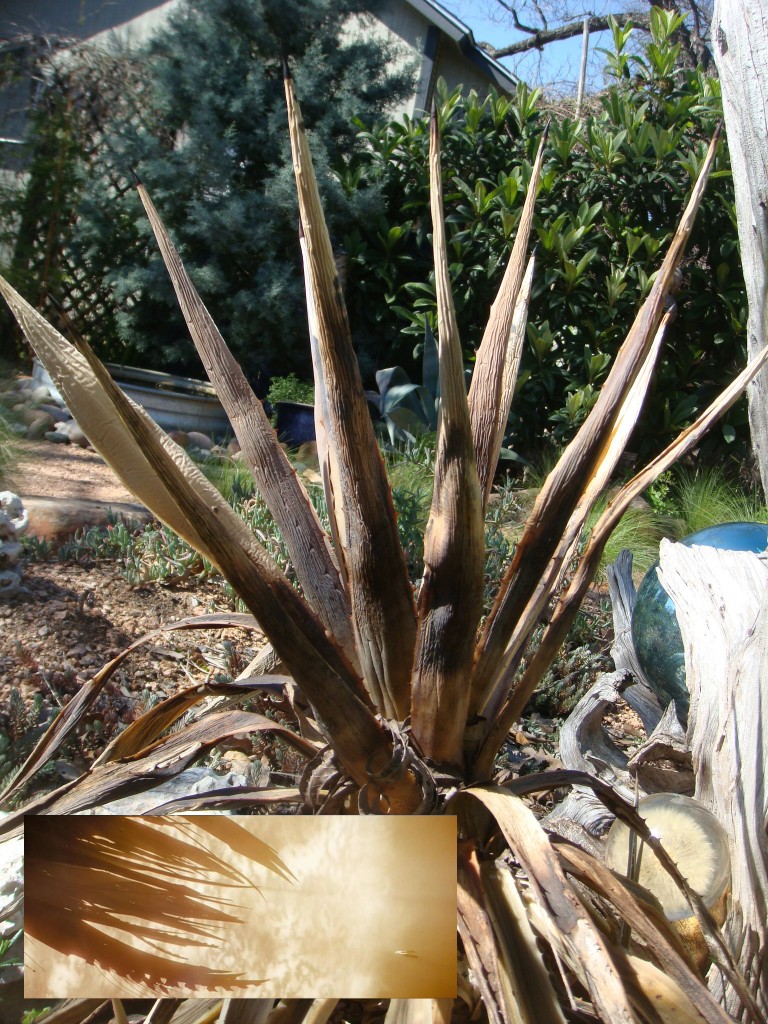
Even with all of the new growth happening right now, I am still discovering frost killed plants. This wizened agave reminds me of Nero’s ship emerging from the “singularity event”.
“Stop being ridiculous ESP, or I will send some red matter into the core of your home-world.”
Not so much red matter as green! New growth on the Inland sea oats, the feather grasses…
and the Fatsia Japonica, this one was warming it’s glossy alien looking fingers to the sun.
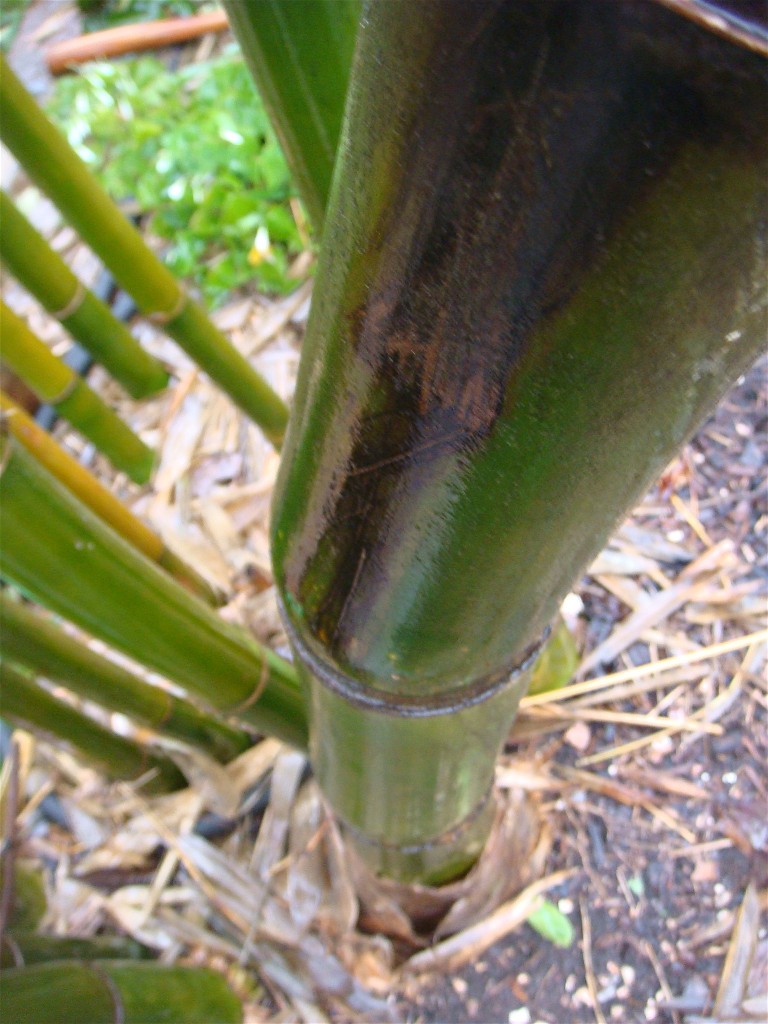 Giant Timber Bamboo also looking glossy after a recent shower.
Giant Timber Bamboo also looking glossy after a recent shower.
Yes the Patch is finally breaking dormancy.
With the resurgence of all this life in the Patch there sadly was life’s cold counterpart.
The first thing very odd, like a harbinger of death from the sky, was a Grackle…a male grackle, that I see all the time as the sun sets, talking a final drink from my stock-tank before nightfall. This grackle is in it’s prime adorning regal robes of purple and black, but today this dark knight had fallen to an enemy, slain, I surmise, by a warrior of the feline variety.
 The ESP witches swooped out of my Post Oak in some sadistic anticipation of a final breath, their breaths foul. https://www.eastsidepatch.com/about-the-esp-witches/
The ESP witches swooped out of my Post Oak in some sadistic anticipation of a final breath, their breaths foul. https://www.eastsidepatch.com/about-the-esp-witches/
The grackle landed on the side of my stock-tank, with one of it’s legs in tatters. The poor bird drank, bled like a bad actor, delivered it’s sleepy hollow omen, then flew up to a nearby ligustrum. About an hour later, the last remaining fish of my original trio, the great Grandfather of all my remaining fish, appeared to have beached itself like a whale up onto a submerged marginal plant in the same pond. A coincidence? Thinking the fish had accidentally grounded itself, I cupped it in my hands and released it back into deeper water, but something was still terribly wrong.
No, not that!
No sooner as I released the fish, it found it’s way back to the same spot, almost like it was deliberately trying to end it’s life. The fish with the red spot on it’s back desperately wanted to help it, it seemed seriously concerned and would not leave the old dying fish alone. It kept nuzzling it, pushing it as if to say no, you can’t be done yet. It even managed to dislodge it once again into deeper water. It kept on nudging it and swimming right up against it, I had never seen anything like it. The old fish once again mustered up some energy and drove itself up onto the same plant, this time I did not interfere. The red-spotted fish never once strayed from it’s side.
It was like a really sad episode of flipper! Do they exist?
I have never witnessed such social behavior from these aquatic creatures. As the sun set in the Patch, I left them both in peace. I believe the morning will bring a new addition to my compost pile, I just wonder if the spotted fish will still be by it’s side. Goodnight old fish friend.
On a lighter note:
Ivy going completely crazy with the almost perfect growing conditions.
My stone crop waterfall has finally started to take shape, streaming down the rocky escarpment that never made it as a water feature.
And this variegated pittosporum has made the perfect camp-out area for the Patch hobbits. The sweet orange blossoms that are just about to bloom will perfume this part of the garden for the next few weeks, this plant is not called “mock orange” for nothing. For shady areas, like under my post-oak, the light colored leaves add interest and a spot of brightness in the shade, it is one of the best small trees for deep shade. The plant makes an excellent specimen plant and a beautiful tree form can be achieved when it is trimmed correctly. Like my Texas mountain Laurels, I like mine to be trimmed up high – one tough durable plant, that can withstand drought, this one is about five years old.
Purple leaf Sand Cherry,
Prunus X Cistena
is also in full bloom right now…
Again, a great drought resistant small shrub, and a great specimen to provide splashes of purple in the garden. Mine is still quite small in width, but this shrub will get to 7-10′ tall and wide over time. The shrub is relatively short lived though at 10-15 years…we will see!
This Agave americana var.marginata ‘Aurea’ looks like it is stretching is arms out and yawning after a long and harsh winter… (well harsh for Texas anyway!)
And finally…
Cherry tomatoes in! Fingers crossed we are done with the cold.
Inspirational Image of the week:

This is an early-afternoon infrared view over Tresco Abbey Garden in Isles of Scilly, England, looking south. A tiny, four-day-old crescent moon is just visible. (Though I challenge you to spot it!) This photo was taken by Jonathan Berman, who won the title of International Garden Photographer of the Year, last year…how did I miss this picture!
 And here is the island of Tresco…not a bad looking place! The island is renowned for its plants and its collection of shipwrecked figureheads of all things. The gardens shrug off salt spray and Atlantic gales to remarkably host 20,000 exotic plants in sub-tropical beauty. The tropical garden is home to species from 80 countries, ranging from Brazil to New Zealand and Burma to South Africa. How can this be possible twenty miles south of the English Cornish coast? Well by building tall windbreaks of Monterey Pine and by building high walls, that’s how.
And here is the island of Tresco…not a bad looking place! The island is renowned for its plants and its collection of shipwrecked figureheads of all things. The gardens shrug off salt spray and Atlantic gales to remarkably host 20,000 exotic plants in sub-tropical beauty. The tropical garden is home to species from 80 countries, ranging from Brazil to New Zealand and Burma to South Africa. How can this be possible twenty miles south of the English Cornish coast? Well by building tall windbreaks of Monterey Pine and by building high walls, that’s how.
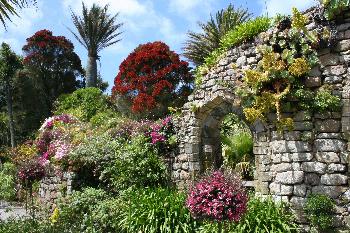 The garden was built by the merchant banker and avid plant collector Augustus Smith who took over the residence in 1838, he successfully designed and channeled the weather up and over the network of walled enclosures. He also created a series of terraces, drier terraces at the top suit South African and Australian plants, those at the bottom provide the humidity that favors flora from New Zealand and South America.
The garden was built by the merchant banker and avid plant collector Augustus Smith who took over the residence in 1838, he successfully designed and channeled the weather up and over the network of walled enclosures. He also created a series of terraces, drier terraces at the top suit South African and Australian plants, those at the bottom provide the humidity that favors flora from New Zealand and South America.
Statues symbolic of natural forces punctuate this sub-tropical garden.
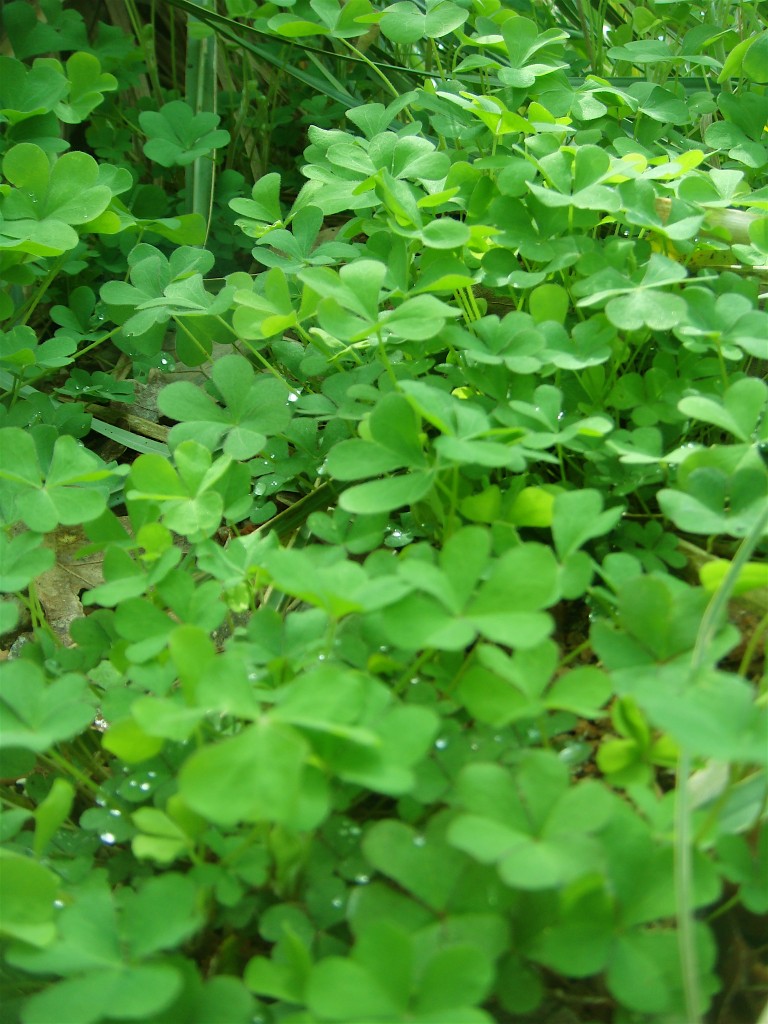 Happy St Patrick’s Day from the ESP!
Happy St Patrick’s Day from the ESP!
Stay Tuned for:
“Jurassic Patch”
All material © 2010 for eastsidepatch. Unauthorized
intergalactic reproduction strictly prohibited, and
punishable by late (and extremely unpleasant)
14th century planet Earth techniques.
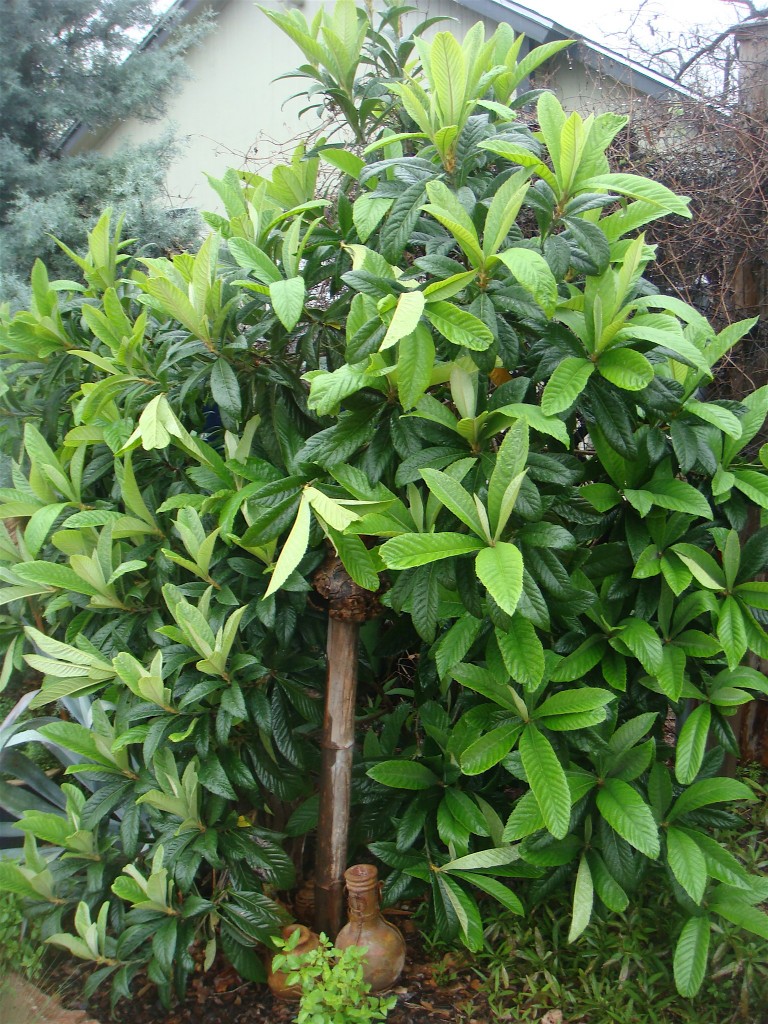
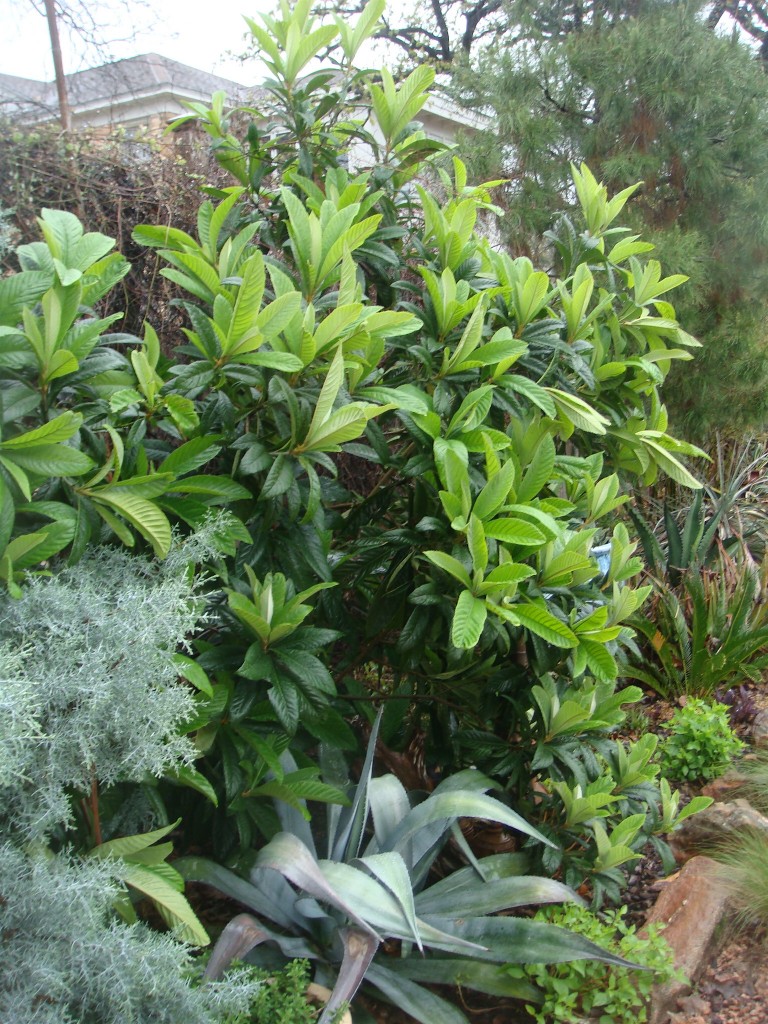


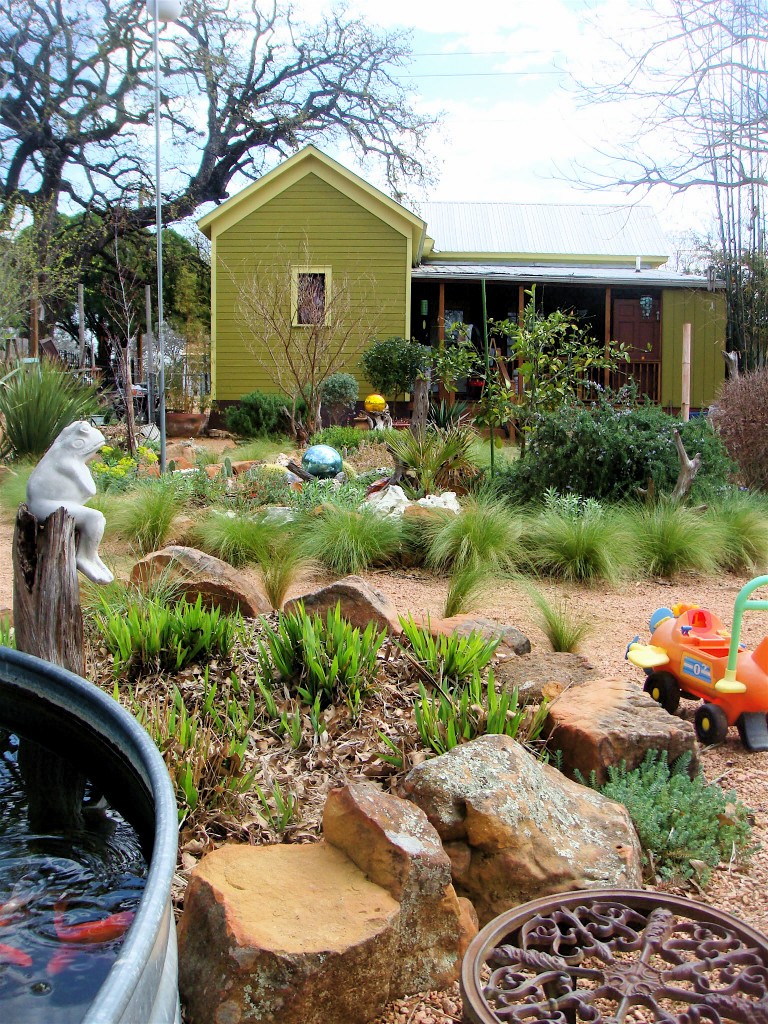
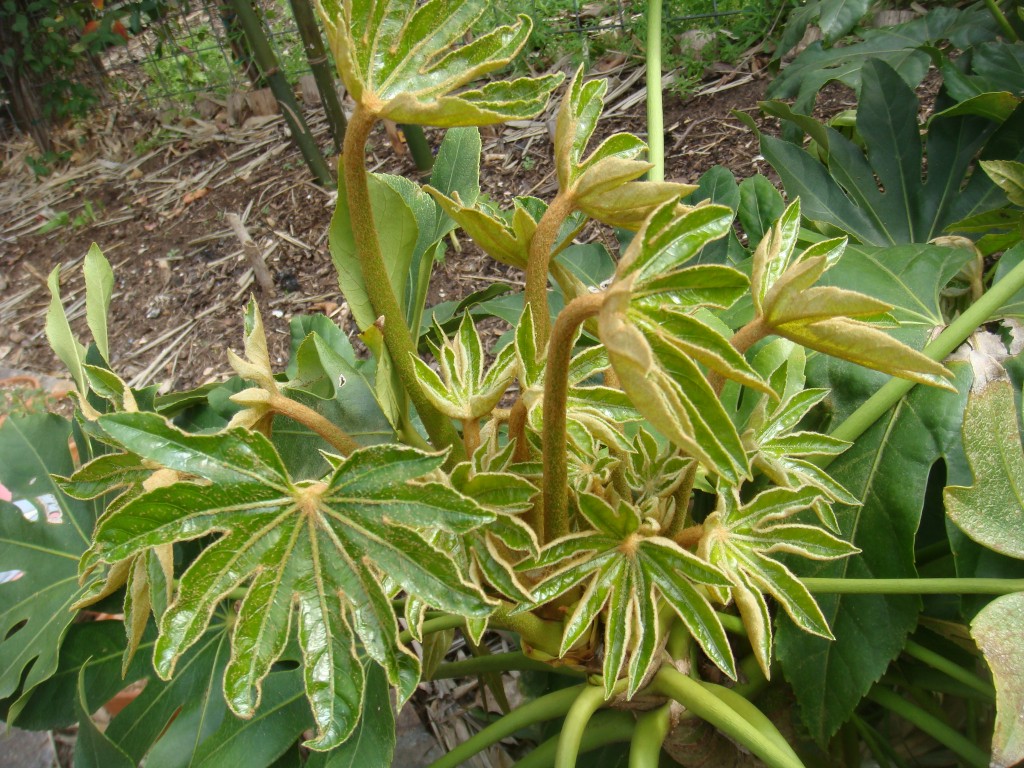
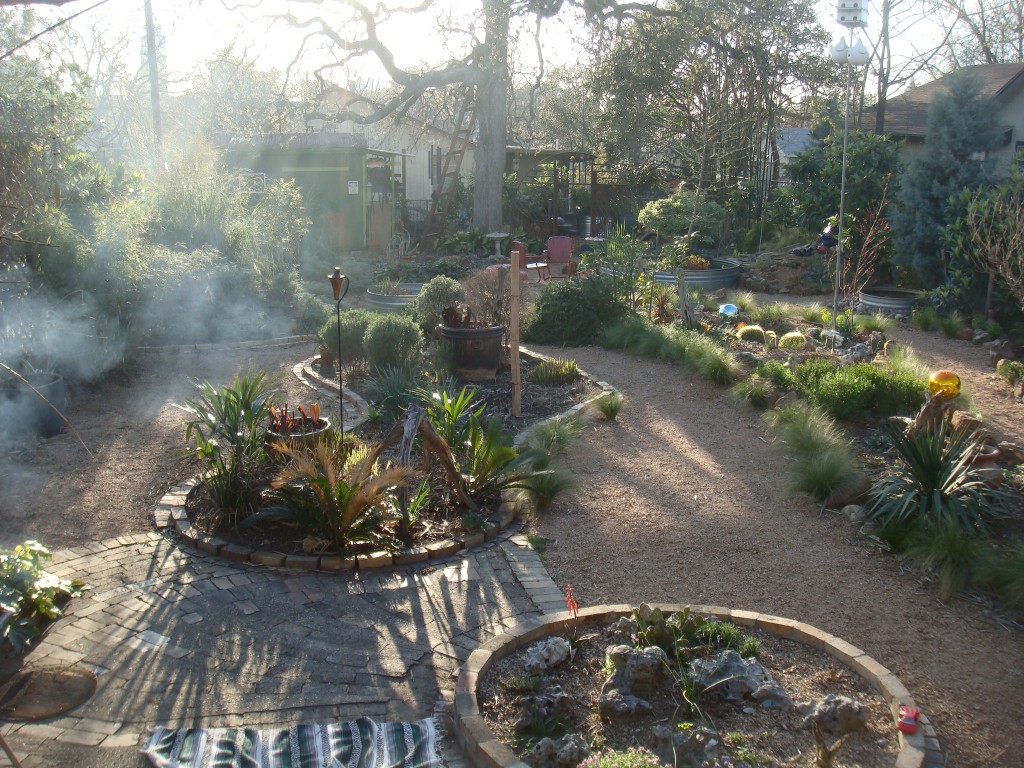

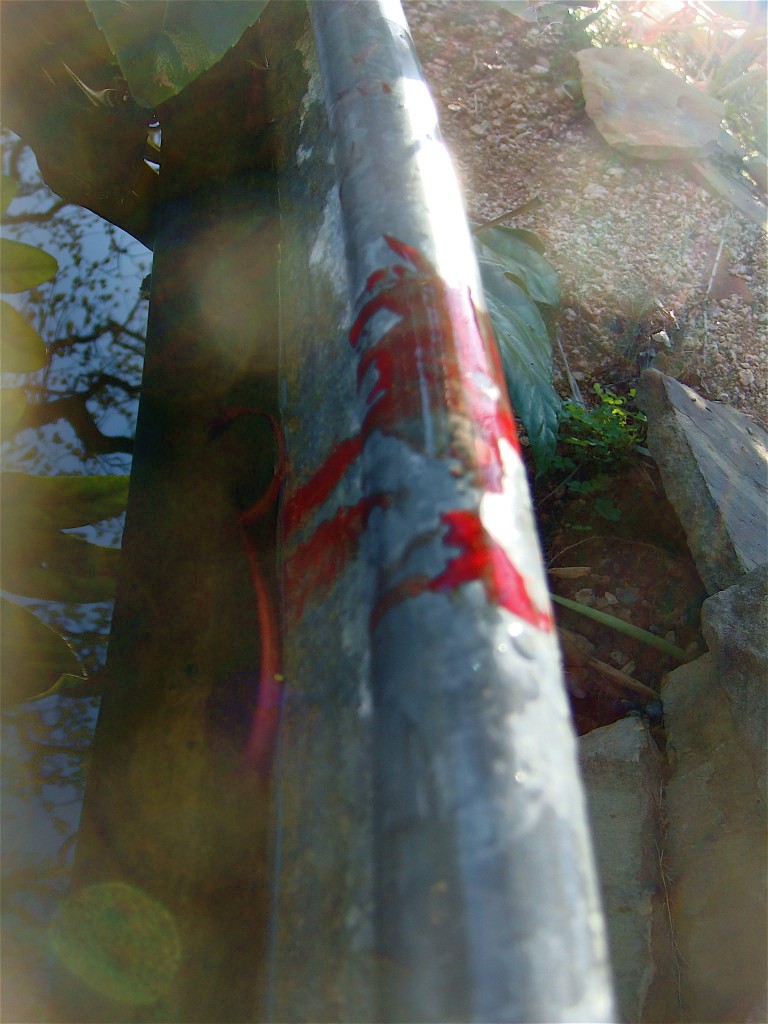

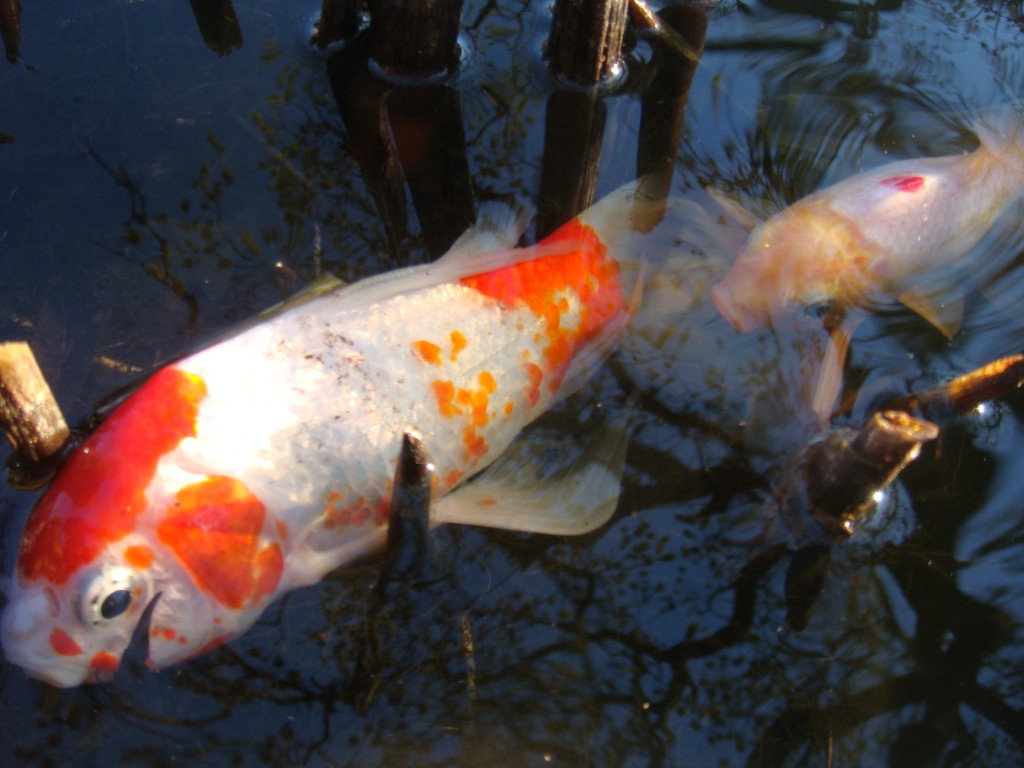

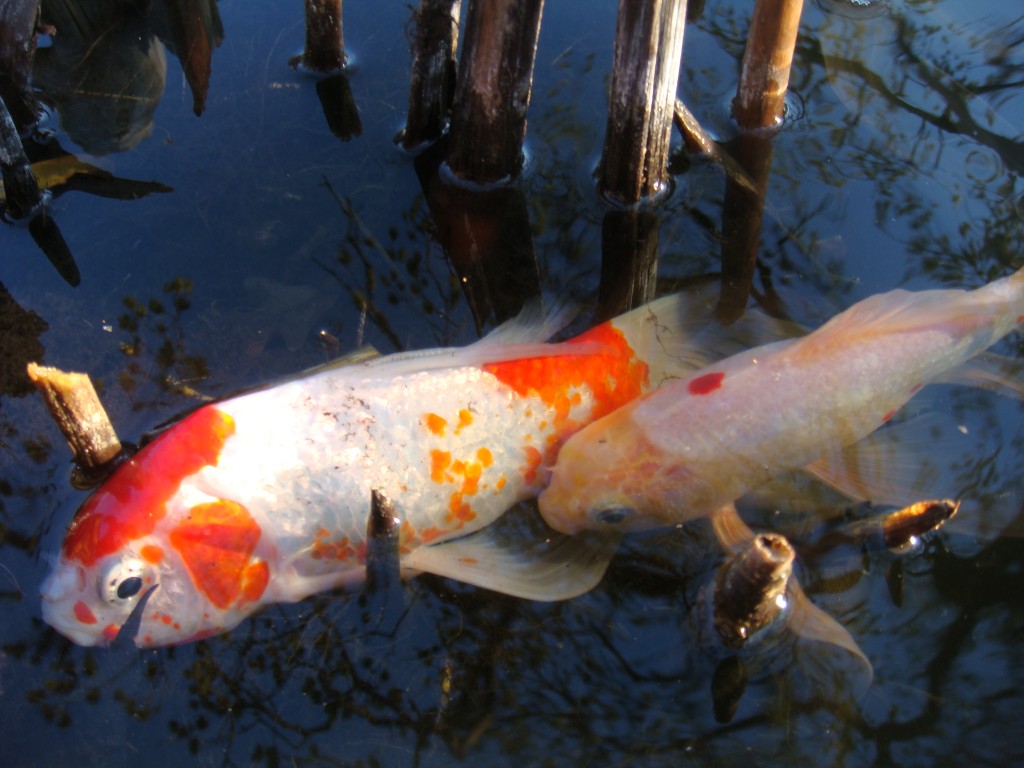
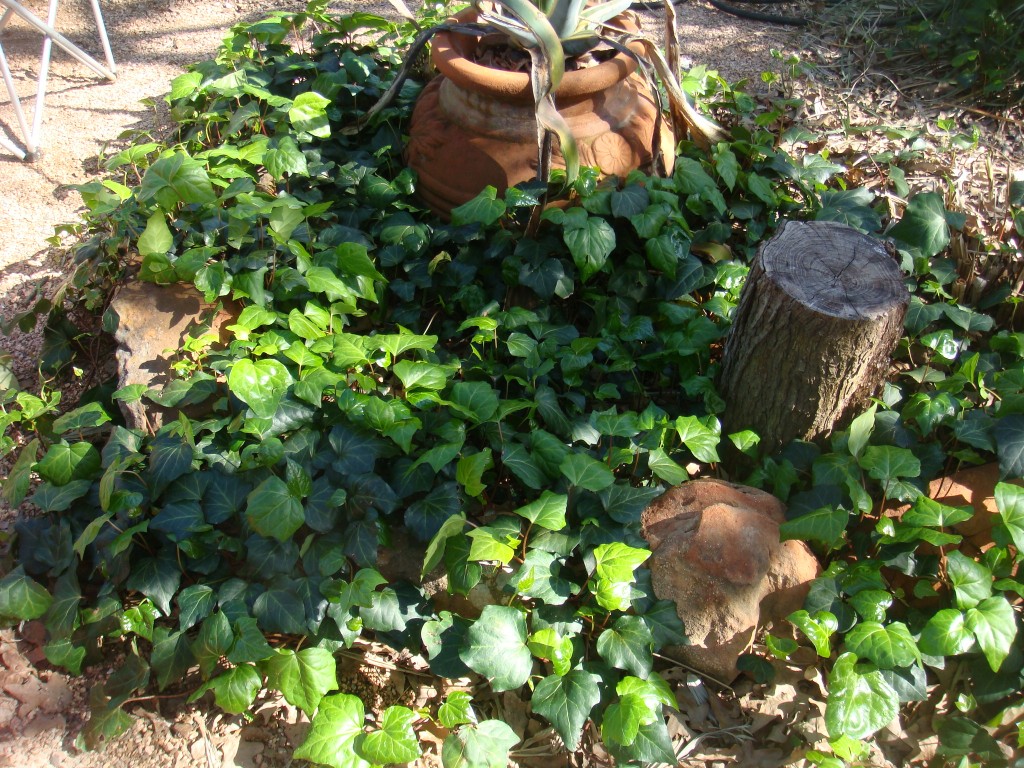
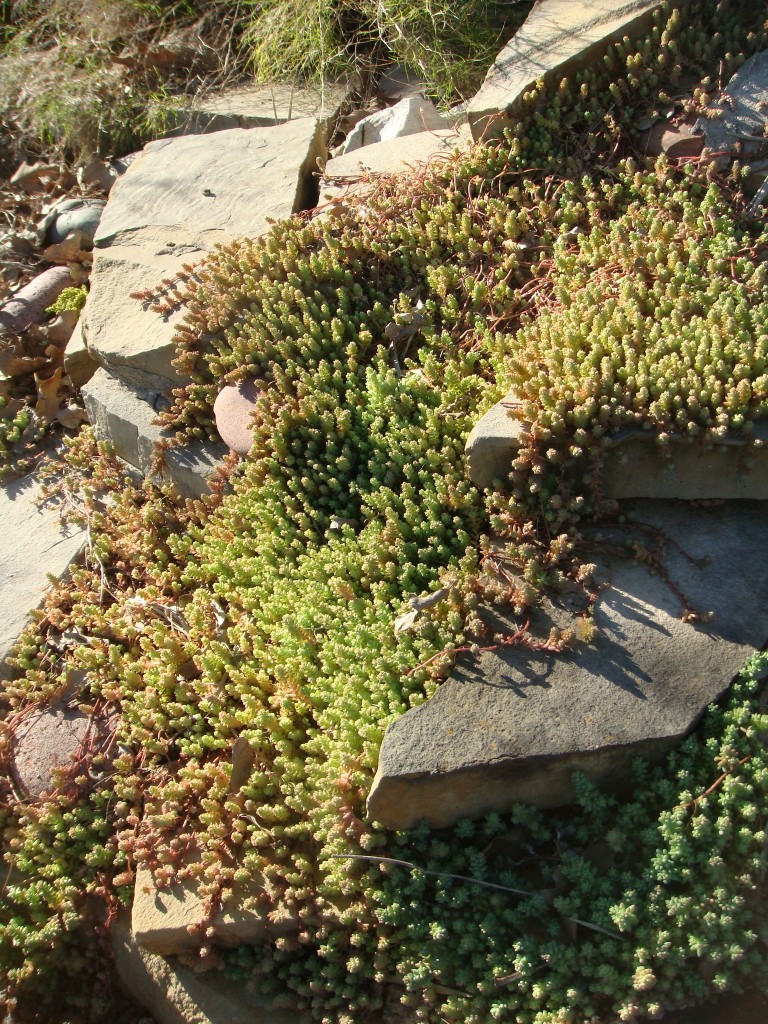
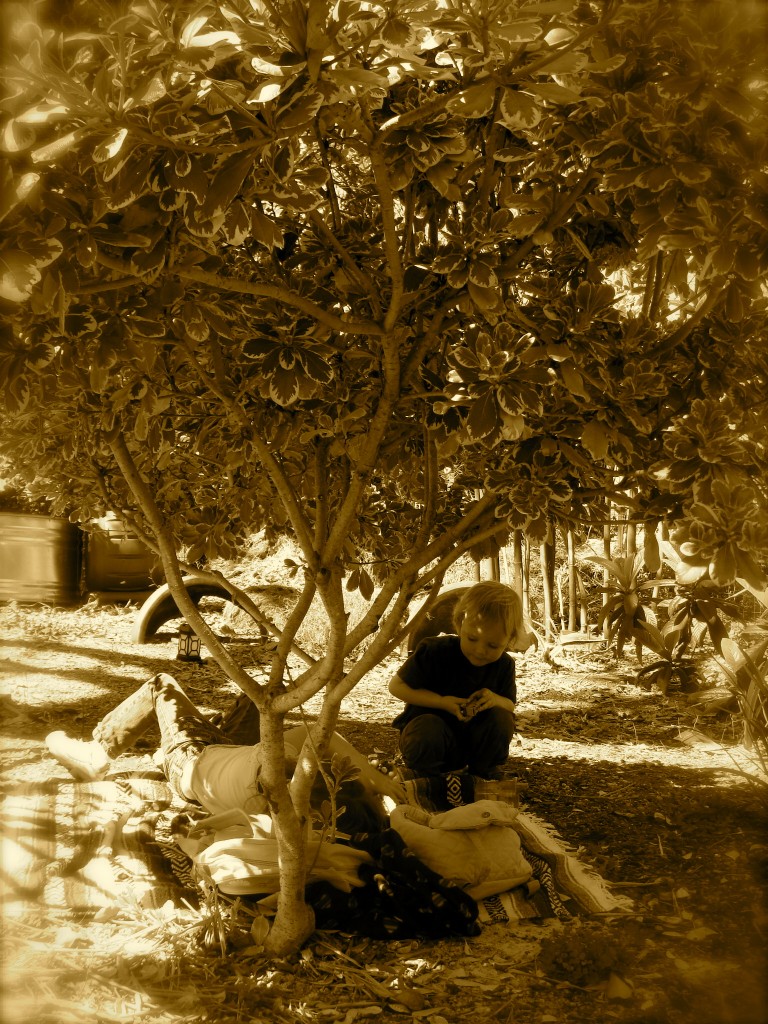
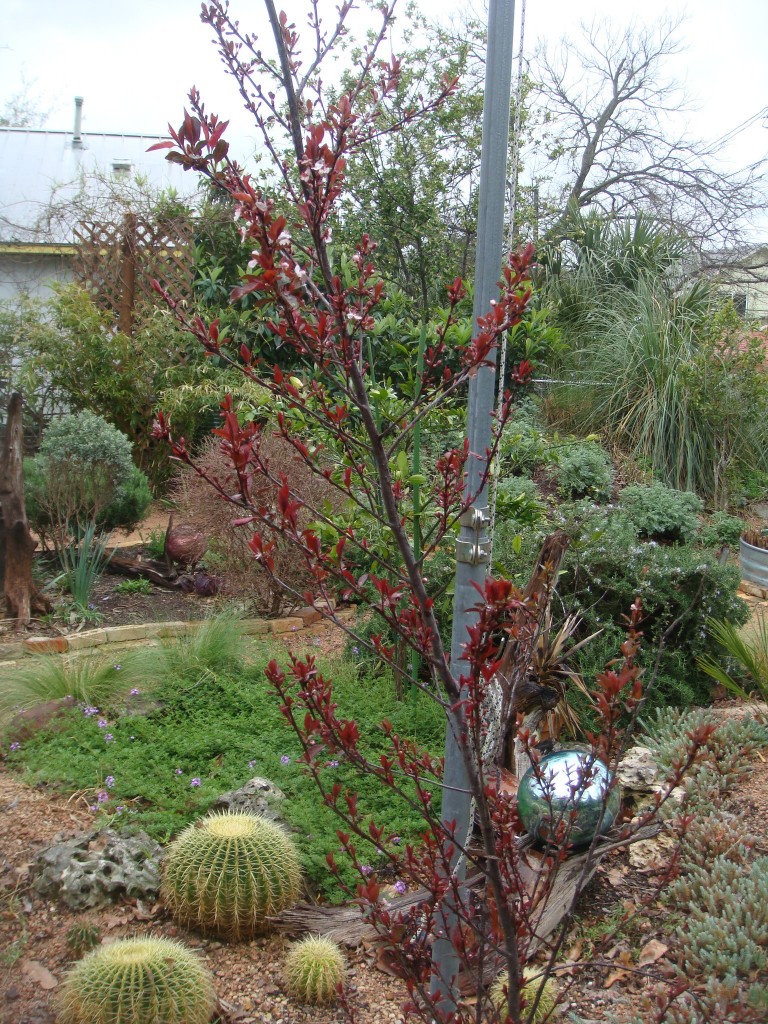
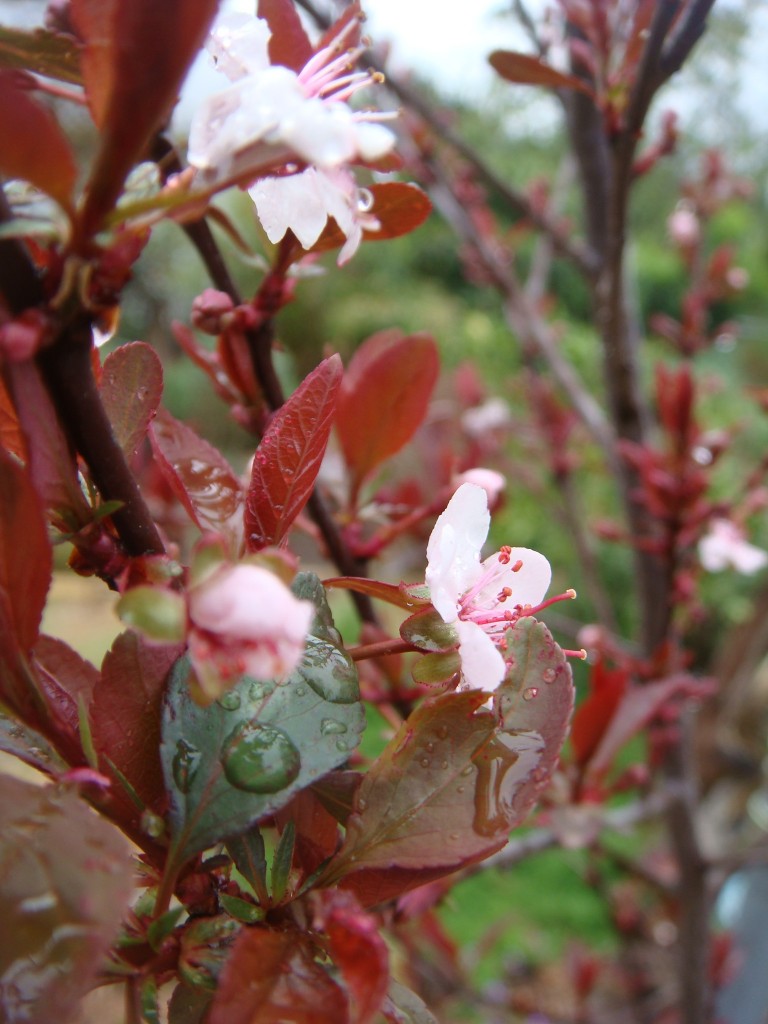
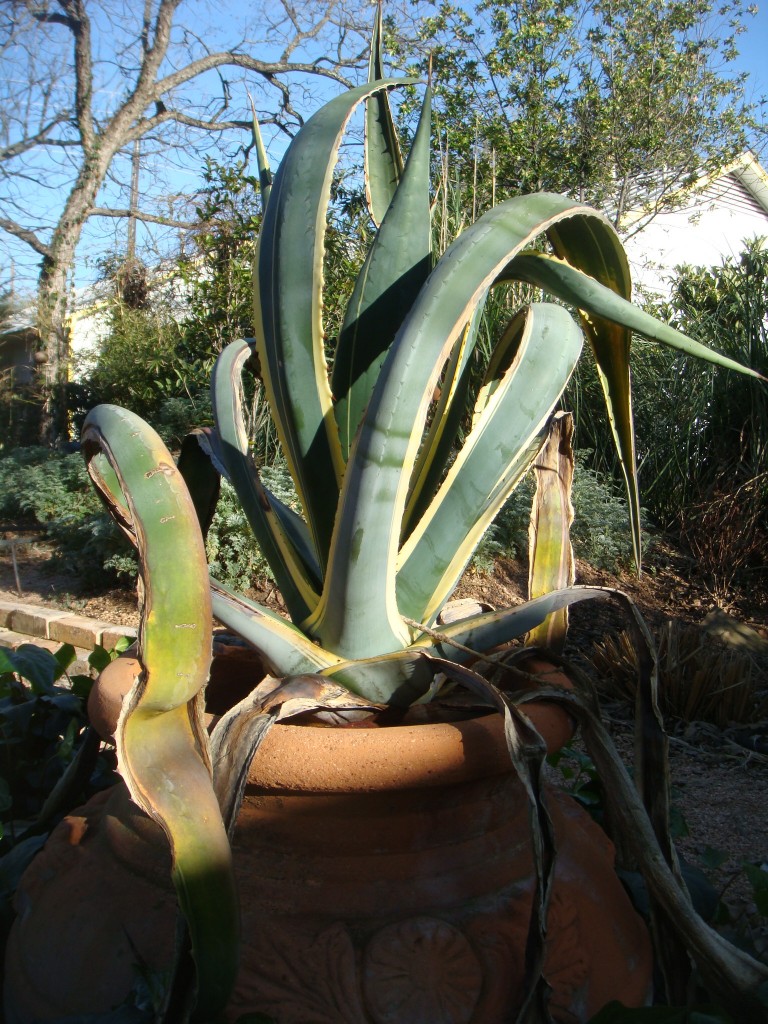
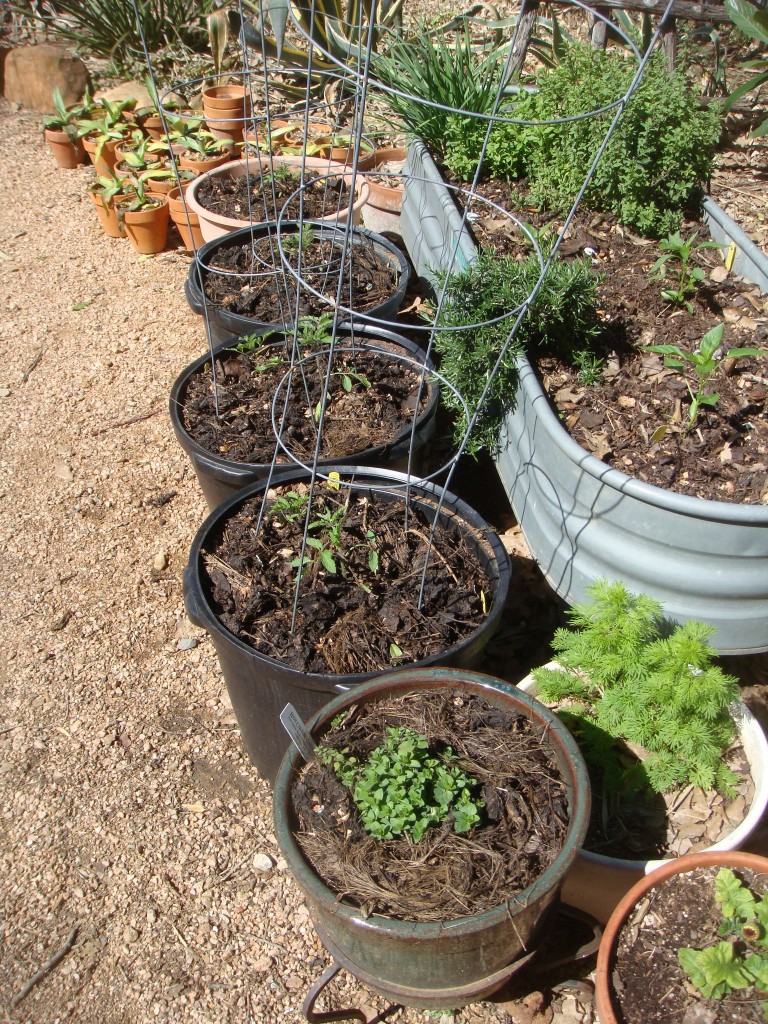
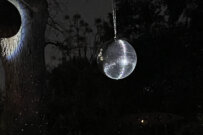





























































Comments on this entry are closed.
Perhaps next year you should sacrafice a lamb close to the equinox, or at least slosh some its blood around, to keep any feathered or finned tragedies from happening. Tresco Abby looks very intriguing.
Haha!
You have a point Les, there was an awful lot of drama going on out there today. The photograph in Tresco Abby is quite amazing and so tropical looking considering its location. Apparently you can hop a helicopter from the Cornish coast to the island.
Cheers Les.
ESP.
I had a similar situation with a dove last year…only I didn’t realize that it’s leg was completely mangled. Had I known at the time, I probably would have let my hunter cat kill the bird since it would have been quicker than the two hours it took for the bird to die.
Hi Katina.
Poor old dove.
I have just “finished off” my grandfather fish, he was lolling around at the bottom of the stock tank this morning, but was still alive when I netted him. It was the humane thing to do. The fish with the spot was still milling around him!
He is now “one foot under” at the back of my garden.
ESP.
Goodbye old fishy…truly amazing the support of the “children fish” as grandfather passed on.
Patch is definitely springing to new life. Looks wonderful.
Hopefully your fish wasn’t just in the spawning mode, trying to get into the only shallows it could find, and the other fish, possibly a male, was trying to stimulate it into ejecting the eggs. If that is indeed the case your new name would be Fish Monger The Terrible. Savage. You know the Naboo are feasting as we speak, or errr, I mean type.
Hi Gail. Poor old fish, still he had a good innings. The Patch really has sprung this past week, the Barbados cherry I was most concerned about is now finally greening up, so happy it is alive. Still nothing on my Mexican Lime tree as yet.
Hi Bob.
Fish Monger the Terrible, I like that! But I really hope I am not!
I am pretty sure this fish was not spawning, something was definitely wrong with it. Being one of my original three I am sure it was age or illness. I have been smelling fried fish for the last couple of days, and have noticed my fennel is disappearing at an alarming rate. I believe you assumption is correct on the Naboo front. I have been noticing their presence a lot more since we have had some warmer days, I think they are finally exiting their winter caves.
ESP.
Interesting happenings on the fishy front. How did the hobbits take this? I ask this because my 4 year old grandson has a little fish tank in his bedroom and when we were there last week one of the fish was clearly about to die. Floating sideways with a sad twist to its body. Savar noticed that one of the smaller fish was trying to nudge it and he thought it was trying to eat it. He was really upset. I’m not sure what happened in the end but my son was going to fish the dead one out when he wasn’t looking. I remember having similar trauma when our guinea pig dies. There were tears and a burial in the garden. Still sad when a creature dies- I buried a cedar waxwing the other day which had probably hit the window.
I never knew that about the loquat. A friend gave us some from her tree last year and even brought us a small tree over to plant in our garden. After I saw the size hers had grown to I knew we had no place for it over here unless I could dig a hole out in the wild. I tried and failed. I’ll just have to beg some more from here this year.
Wonder which agave that was that died? Your Mexican feather grass looks wonderful and will be perfect as a path edger.
Rain is one thing cold is another. Miserable day today.
Hi Jenny.
The Hobbits were aware of the ill-fish but I naturally shrouded them from the nitty-gritty of the extraction and subsequent head bludgeoning at the side of the pond…I think they would have been scarred for life! I almost was! Okay not quite. It is funny you mentioned the nudging fish perhaps wanting to eat the dying fish, that is what Leah said just after I had published the post…I thought to myself…surely not, no, that could not have been the reason for such fond activity, could it? I am still convinced that there was something much more social at work here. RIP Old Man (William Wallace accent).
Loquats do get to a good size if unchecked, and like Vitex, they can assume a host of aesthetics and sizes. I have left mine alone so far, and I really like how their branches and foliage, (particularity in the shade) touch the ground, they are adding a really exotic look to the perimeter of the Patch right now, one of my favorites for Texas, can you tell? Mine do tend to drop foliage during the Mars temps of summer, but they quickly bounce back.
I will find out what that agave was, I had three – all succumbed to the cold, (potted and in the ground) and get back to you…it did have marginal coloration, not one I will plant again – too tender for the Patch.
Loving the feather grasses already this year.
Fingers crossed for my tomatoes with this cold front…did you move yours to the greenhouse?
Cheers RR.
ESP.
I’m with you on the behavior of the friend fish. I’d much prefer to believe he was trying to offer comfort in the old fish’s last moments, rather than waiting for the buffet to open like Luby’s. Your garden is springing back wonderfully. I’m loving the smell of the Mountain Laurels, too. I have 5 along the drive and it’s heaven to go get the mail right now!
Henry Mitchell wrote about Tresco but he used words only – no photographs… it’s cool to see the aerial view, ESP.
Sorry about your fish – can remember my daughter’s large Cichlid jumping out of the tank to lie between stand & wall for nearly a day before being discovered. Went to bury it and it was alive – lived for a few more years after being returned to the tank. No partner fish there – ‘Jack’ ate everything else.
Your loquats look great and so does the Texas Mountain Laurel. Mine is blooming at last, but no way could I expose the trunk… after 4 years in the ground it’s still only 15″ tall. Hope to look up at the flowers some day – or at least have them at nose level!
Annie at the Transplantable Rose
Hi Diana.
Yes, better to think social behavior then “Are you dead yet? Are you dead yet? Can I start eating you yet? :-)
The Patch has really jumped this last couple of weeks, though some plants are still seriously slow to emerge from dormancy this year…as for my Mexican lime tree? Still no sign of life…patience…patience (yoda)!
The Mountain Laurels have been spectacular, if only I had more sun I would plant a line of them too. The rains seemed to intensify their aroma this year.
Thanks for popping in.
ESP.
Hi Annie.
I totally stumbled on Tresco as a result of finding the picture that won the award last year, it looks like an amazing place, a place that I would like to visit one day, perhaps my next visit to the homeland? Oh who am I kidding, I am always way to busy when I get over there!
That is one crazy story about the Cichlid! A little “Re-Animator” for my liking….Brrr! Jack ate everything including his tank!
The loquats are the best I have ever seen them with our recent rains. They do tend to recess in our hottest months, but mine are still relatively young, I think (and hope) that as they mature they will retain all their foliage in our summer…time will tell.
The mountain laurel is a bit of a tortoise on the growth front, but I have to say, a gardening / lasagna guru a few doors down, planted a bunch in the duplex adjacent to the Patch. I will not tell you how long these took to grow for fear of sending you into a deep laurel depression! They grew at an amazing speed, double the speed of mine!
His apparently were the Hare’s of the laurel world! As usual…soil is key, even for a reported “slow grower”. You also do not want to know how fast his Texas Sable major and minor grew in the same soil! I am still in shock at how fast that screen went up!
ESP.